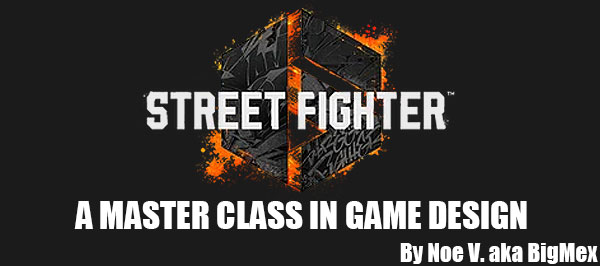
The Street Fighter II: The Animated Movie was released in 1994. It was one of the best video game adaptations ever made. I think that to this day it remains critically undervalued for its contribution to the series, and genre. The film was directed by Gisaburō Sugii, produced by Kenichi Imai. The two also wrote the screenplay. What was surprising about the film was that it was completed in a short time span, and with a team that didn’t necessarily know anything about the game.
In all it was finished in 6 months, and this was after the original director quit. Thankfully it was saved by hiring a former employee who was passionate about the game. He came in to co-direct. Plus the studio consulted with actual MMA fighters to figure out the choreography of the battles.
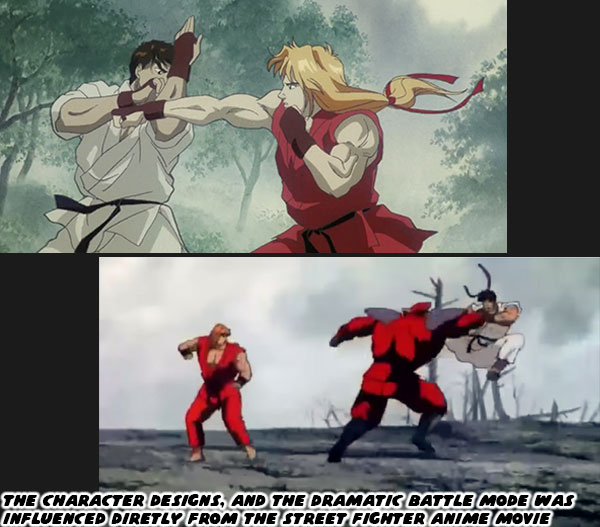
Despite all of these setbacks the movie was a hit in Japan, and internationally when it was released in the VHS / DVD market. It presented a narrative of the SF legend so well that it was adopted by Capcom. In particular Noritaka Funamizu saw how great the flashback sequences worked with a young Ken, and Ryu that it inspired him to develop SFZero. Even the details of having Ken with a long ponytail, and Ryu with a white bandana in the game were pulled directly from the film. That was not the only thing, the climactic battle at the end with the duo fighting Vega / M. Bison / Dictator inspired the creation of the Dramatic Battle mode in SFZero. .
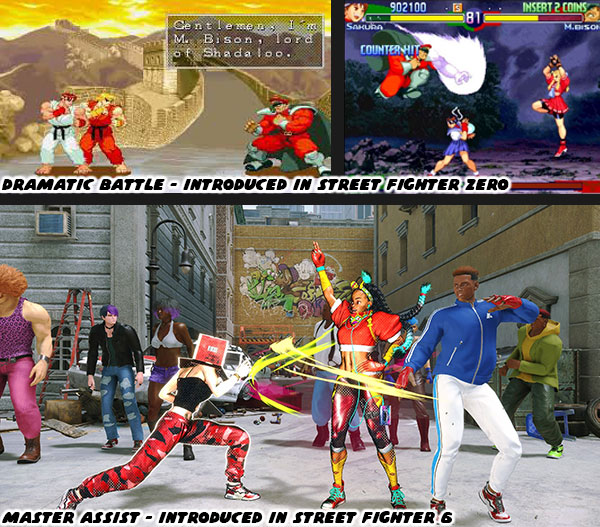
Using a special code you could have player 2 join you on a beat down on the evil Dictator. My older brother, and I would laugh like maniacs while beating the snot out of him on the Sega Saturn version. Originally only Ken, and Ryu could take part in the Dramatic Battle, but this was expanded to any character in the sequels to the game. I would contend that the Master Assist in Street Fighter 6 was essentially the new version of Dramatic Battle. Allowing you to fight side-by-side with one of your masters. It only took Capcom about 27 years to realize how fun it was double-teaming opponents. That wasn’t the only thing that the game series took from the film. The switch from smashing a car to a diesel truck in the bonus stages was more than likely influenced by the surprise at the end of the film.
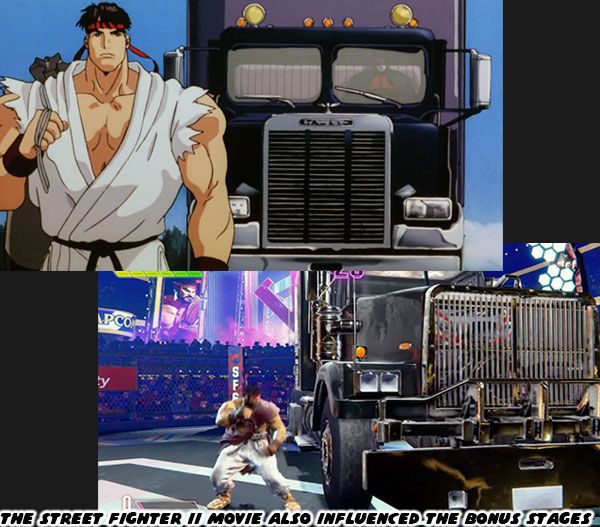
Even little details like having Gouki appear in a cameo did a lot to influence the art team. Super Street Fighter II was still relatively new in arcades, and not many people were familiar with Gouki. So it wouldn’t have made sense to see him as the main villain in the film. Most audiences were already familiar with Vega / M. Bison / Dictator. Still, having Gouki selling fruit in the background gave the character tremendous personality. Having Bengus recreate the image in the SFZero official art did more for the character than any fancy fighting pose.
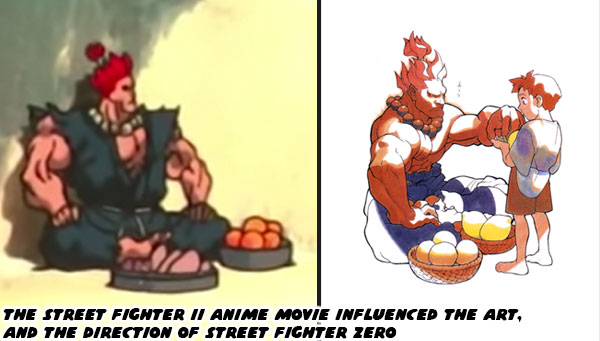
The film was also somewhat progressive in a way. The announcer of the match between Zangief, and Blanka was made flamboyant on purpose. I’m sure the animators just did this for laughs originally. The character was presented as a ringmaster, wearing a sparkling stars, and stripes outfit. He clearly represented the spectacle of the battle that was about to happen. This type of effeminate character predated Eternity by decades. In a way I think that Capcom saw this as a blessing. By going to the trouble of designing a gender nonconforming side character it would be okay to revisit the idea again in the future. Whether that would be in another animated project, or a game had yet to be seen.
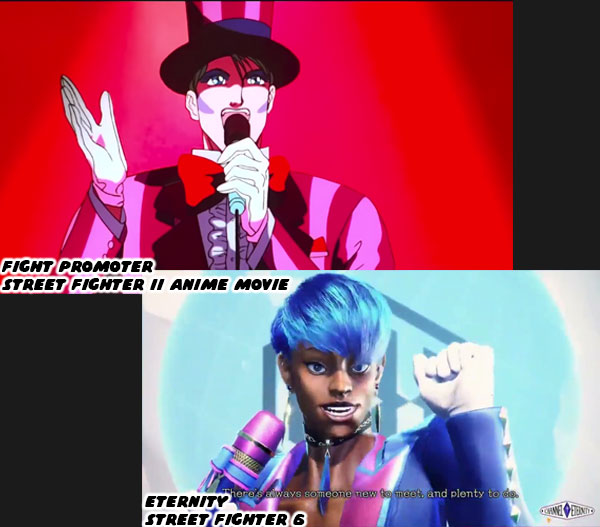
The most important contribution that the SFII Anime Movie (SFIIAM) gave Capcom, and every other studio for that matter, was the perfect story telling template. Story structure was something that I had studied for years in screen writing, and novel writing classes. One of my teachers was the award winning poet, and novelist
Frank X. Gaspar. One of the most important things he taught the class was “show, don’t tell.” He would emphasize that the best stories showed you the things that moved the narrative, changed the characters, or did both at the same time. They never told you about it. For example in the SFIIAM the focus was on Ryu. Rather than tell you he was serious about his life-long pursuit with the martial arts the movie showed you. It would be easy to say "Ryu was an amazing fighter, but also had a kind heart." Of course that could mean different things to different people. Was Ryu an amazing fighter because he entered every major fighting tournament, and had an undefeated record? Or more canonicaly he avoided high-profile televised tournaments, and sought out the local legends to test himself against? Did either of these things show us that he was any good at fighting?
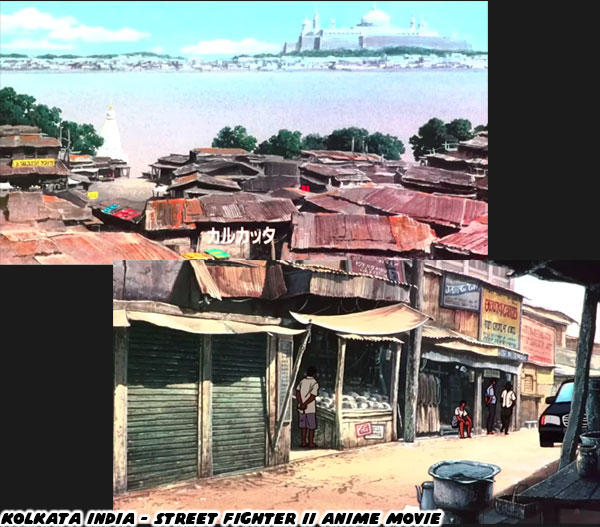
The movie didn't use any narration, instead it would present who these fighters were in short scenarios. The best example of this was in the Kolkata (Calcutta) India portion. We were following Ryu on his journey. We were seeing the sights, and hearing the sounds of an exotic location. Well it was exotic if you lived in Japan, or the US, and had never traveled. In the sequence we were introduced to the poor, and densely populated city. From the onset we could see the layout of the land, an ancient temple, and modern city were side-by-side. We could see that there was a political activist giving a passionate speech to a crowd of people. Some armed guards circled the area. The character looked like Mahatma Gandhi for dramatic effect.
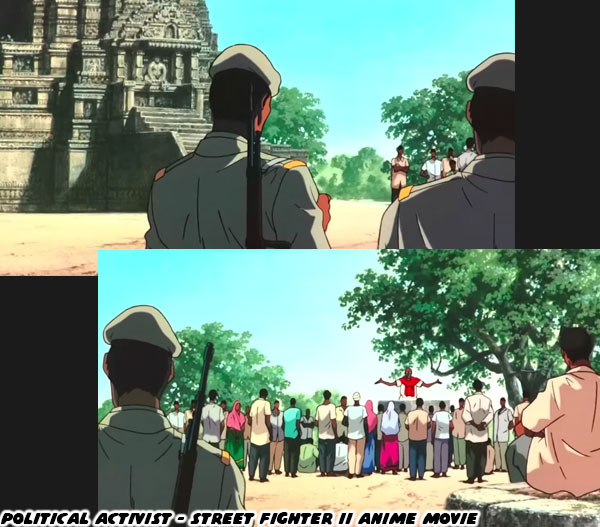
At the very same time the movie sets up a parallel plot. We will call it the accident. We see a little girl running down an alley. Ryu wasn’t paying attention, and the two collided. The little girl triped, the contents of the tin jug that she was carrying spilled all over the dirt road.
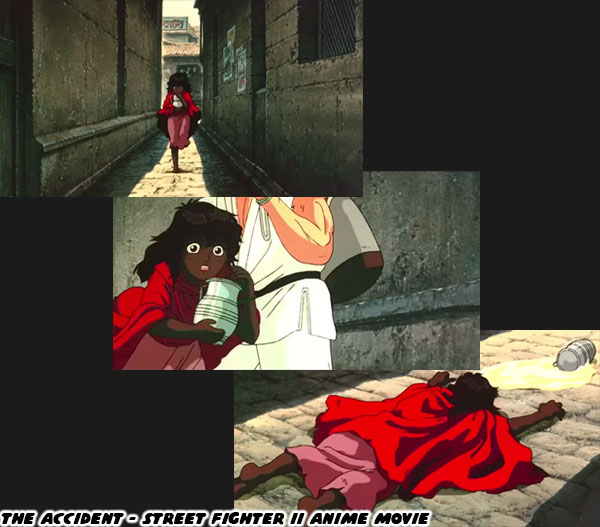
Ryu checked on the girl but she seemed more focused on the contents of the jug. She scrambled to it, and clutched it to her chest. Ryu realized that it was milk. It was going to be for her mother. Ryu could see that the duo were living in abject poverty. In a shanty leaning against a building. He recognized that this was all they had. He accepted responsibility, and gave the little girl money while apologizing. The little girl hesitated, took the money, and cracked just the tiniest smile. He glanced back at her mother, and she gave him a slight nod. Ryu returned the gesture, and walked away.
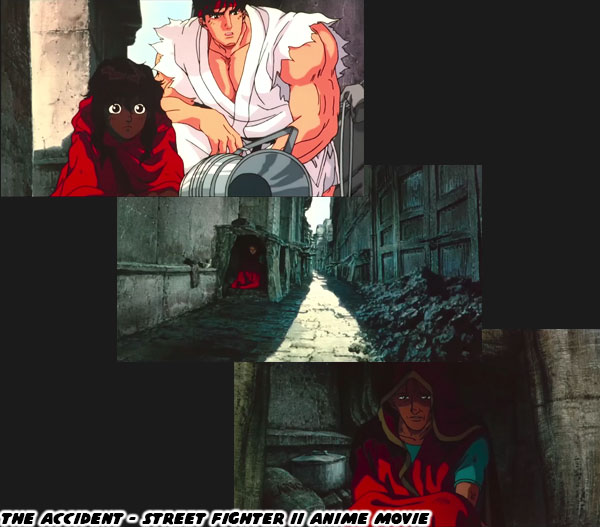
Those few seconds of film did more to tell the audience what type of person Ryu was than anything else in the movie. He was not a soulless fighting machine. He had sympathy, and understood there were many less fortunate. Even though he was essentially homeless as well, he knew he had his health, and friends to rely on. He made sure to fix his mistake, show some compassion, and leave the poor family with their dignity intact.
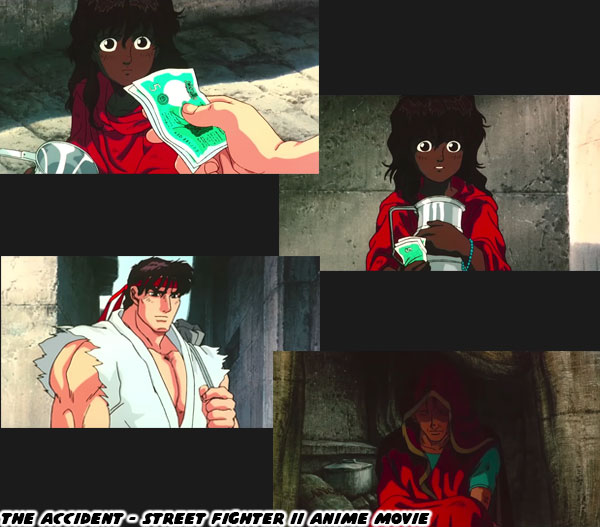
Then the movie cut back to the political activist. We see a brainwashed soldier run through the crowd, and assassinate the speaker. This mirrors the assassination that Cammy had committed at the start of the movie. The soldier then took off running.
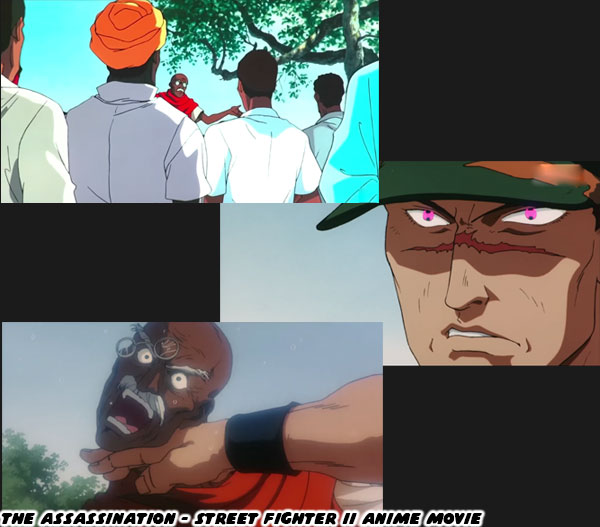
We cut back to Ryu again. He was still wandering the side roads, and saw the little girl from a distance. She was waving, and seemed to be bringing him back his change. She had a huge smile on her face. Suddenly the soldier ran right over her, and didn't stop.
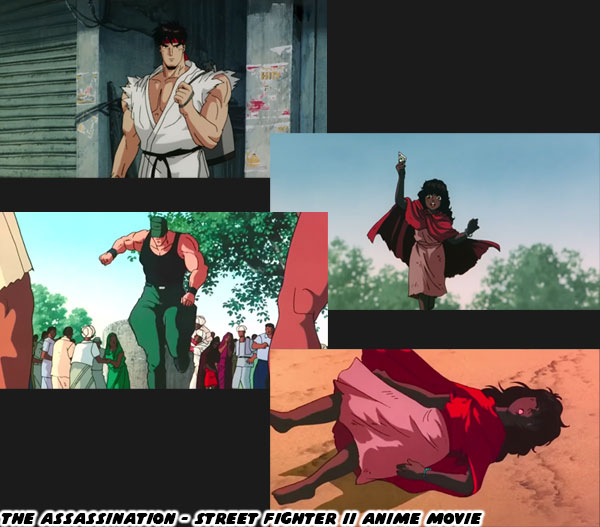
The soldier was then shot by the local police before he could reach a getaway car filled with Shadowlaw henchmen. Instead of helping him out they also opened fire on him as well as the crowd of innocent bystanders.
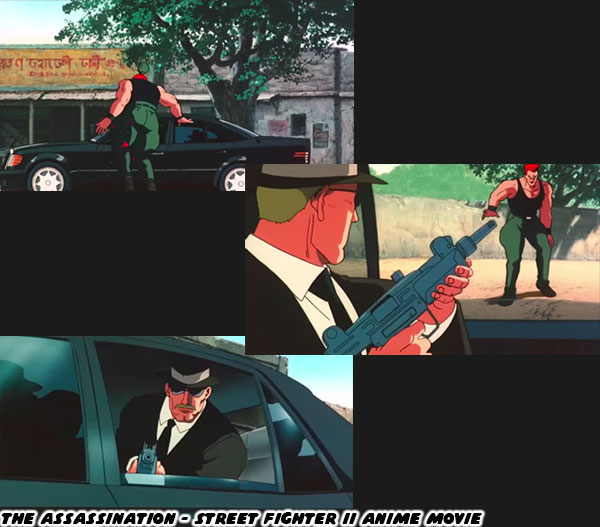
Ryu sprung into action, with a leaping kick he broke through the windshield, and disabled the driver. Then he pulled the passenger out, and kicked the soul out of his body. This demonstrated several things. Ryu was insanely strong. Windshields were made of tempered glass. It could take more than 20,000 PSI to break a windshield. Ryu did it with a single kick. The other thing we saw was his incredible speed. The assassins couldn’t draw their weapons fast enough before they were subdued. Ryu returned to the girl, and made sure that she was getting medical attention. Those sequences were maybe a minute or two in total run time. They showed that it was possible to give a fighting game archetype a lot of humanity, without detracting from the action. They showed everything we needed to see, and nothing was wasted while still moving the plot forward.
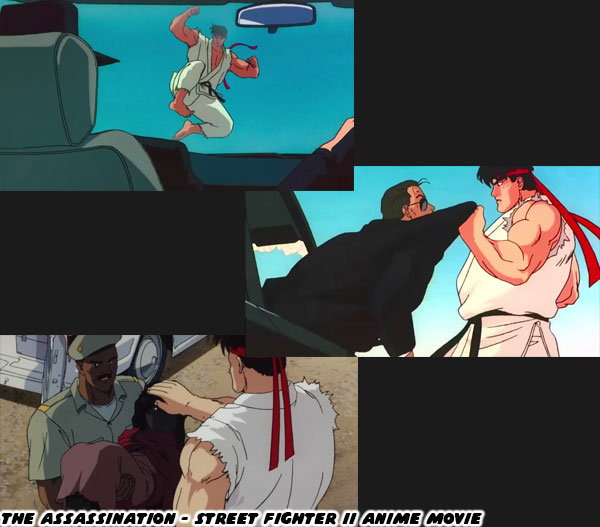
Ryu had inadvertently crossed paths with Shadowlaw from this heroic act. They would now be coming after him. If they couldn’t reach him, then they would go after his best friend.
It was amazing storytelling, and very few video game adaptations had writing that was half as good. So what did any of this have to do with SF6? Capcom had been paying attention to all of the SF media of the past 35 years. They knew what worked, and what didn’t. In order to get us invested in the bigger story of the SF6 World Tour they had to show, rather than tell us what was happening.
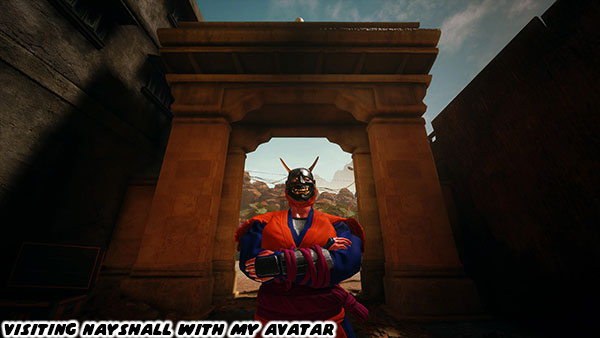
Nayshall was a developing country. Some saw it as exploitation from foreign interests, and some saw it as new opportunities. The team at Capcom didn’t spell out which side you should fall on, or even believe. They were letting you explore a complex issue as it was happening in real time. We will see how in the next blog. I hope to see you back for that. If you are a long time fan of Final Fight, or Street Fighter then I would like to hear your impressions of SF6. If you have never played any game previously then tell me your experiences in the comments section please. As always if you would like to sponsor me
please visit my Patreon page and consider donating each month, even as little as $1 would help make better blogs and even podcasts!















![]()















![]()
I wish it had taken even more, to be honest.
ReplyDeleteA SF game that uses ArcSys's graphical methods to emulate the SF2 anime movies art style is a dream of mine.
I don't care much for SF6's realistic art style. Don't get me wrong, they did an amazing job with it, it's just...not what I was hoping for.
I was hoping for an Alpha 4. With modern 2.5D cel-shading.
I also enjoy the more stylized aesthetics of SF Zero, and hopefully if SF6 does the sales numbers that Capcom hopes for then maybe they will be able to push the visual envelope in further games.
Delete